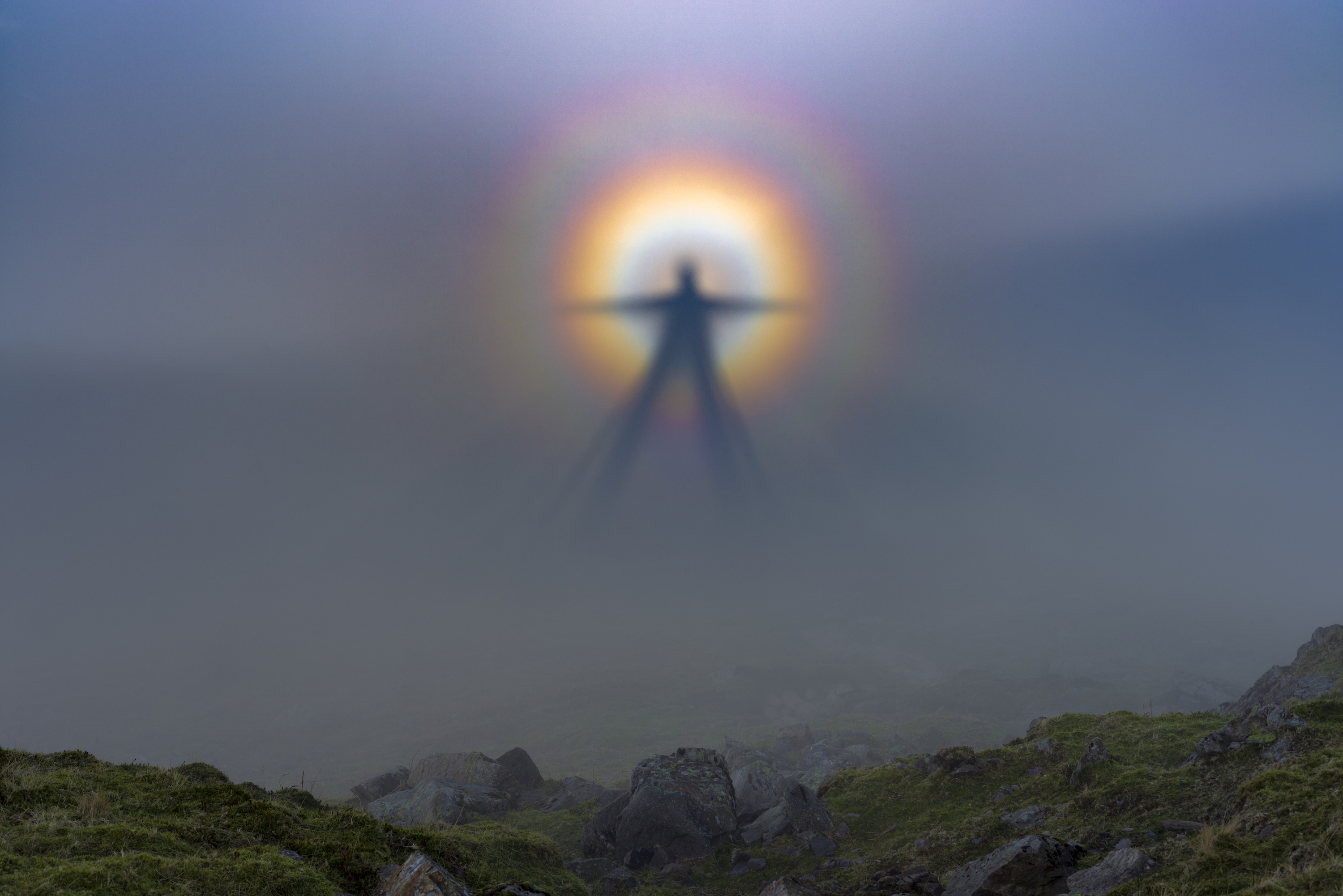'Dark Watchers' have been spooking California hikers for centuries. What are they?
Enormous, shadowy figures in hats and cloaks have haunted the California coast for more than 300 years. What are they?

For hundreds of years, people have looked up at the hazy peaks of California's Santa Lucia Mountains at sunset and seen tall, cloaked figures staring back. Then, within moments, the eerie silhouettes disappear.
These twilight apparitions are known as the Dark Watchers — shady, sometimes 10-foot-tall (3 meters) men bedecked in sinister hats and capes. They primarily appear in the afternoon, and according to a recent article on SFGate.com, visitors to California have seen them perched ominously on the mountaintops for more than 300 years.
"When the Spanish arrived in the 1700s, they began calling the apparitions los Vigilantes Oscuros (literally "the dark watchers")," SFGate managing editor Katie Dowd wrote in the article. "And as Anglo American settlers began staking claims in the region, they too felt the sensation of being watched from the hills."
Related: Why this optical illusion arrow always points right
One famous observer who felt the presence of the Watchers was the American author John Steinbeck. In his 1938 short story "Flight," a character sees a black figure leering down at him from a nearby ridgetop, "but he looked quickly away, for it was one of the dark watchers," Steinbeck wrote. "No one knew who the watchers were, nor where they lived, but it was better to ignore them and never to show interest in them." (This was a family obsession; Steinbeck's son, Thomas, went on to co-author a book about the Watchers with painter Benjamin Brode, Dowd wrote.)
So, who — or what — are the Dark Watchers?
One theory, according to Dowd, is that they are merely figments of the observers' pattern-seeking minds. In other words, it's a classic case of pareidolia: a psychological phenomenon in which an observer's brain finds patterns or significance in a vague or random image.
Get the world’s most fascinating discoveries delivered straight to your inbox.
The phenomenon is the reason some people see Muppet faces on the moon, or the visage of Jesus on burnt toast. In this case, ordinary shadows on the Santa Lucia hilltops may be interpreted by the viewer's brain to be tall, cloaked figures (the Watchers tend to appear in the late afternoon, when long shadows grace the hills, after all).
This pattern-seeking effect could be amplified by the presence of fog or low-flying clouds, according to Dowd. Shadows cast against clouds are responsible for another infamous illusion, known as the Brocken specter.
"German locals near the Harz Mountains have, for centuries, reported seeing shadowy figures on Brocken peak," Dowd wrote. "In reality, the Brocken spectre … happens when shadows — like those of a hiker — are cast on particularly misty mountain peaks. If the sun is behind the observer, the mist plays with the shadow, making it look huge and menacing."
The spectral figures are usually surrounded by a rainbow-colored halo, produced by sunlight refracting off of water droplets in the fog or clouds, according to the BBC. While it's common in the Harz Mountains, where fogs frequently creep in at low altitudes, you can see the effect on any misty mountainside with the sun at your back and the clouds below you. Perhaps you've seen it yourself from the window of an airplane; cruising between the sun and the clouds, the plane can cast a rainbow-rimmed shadow on the clouds below that looks supernaturally large.
It's possible, then, that hikers in the Santa Lucia Mountains are merely staring down their own shadows when the Watchers come a-watching. (Sorry, Steinbeck.)
Originally published on Live Science.

Brandon is the space / physics editor at Live Science. With more than 20 years of editorial experience, his writing has appeared in The Washington Post, Reader's Digest, CBS.com, the Richard Dawkins Foundation website and other outlets. He holds a bachelor's degree in creative writing from the University of Arizona, with minors in journalism and media arts. His interests include black holes, asteroids and comets, and the search for extraterrestrial life.



